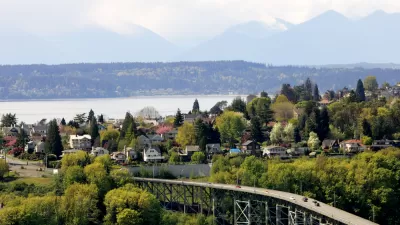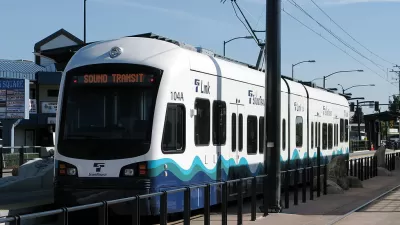The city should look back to its past for lessons about creating more livable, affordable, and equitable neighborhoods, says a new report.

The Seattle Planning Commission has released a new report that advocates for a move away from single-family zoning. The report recommends that the city instead embrace a more diverse array of housing types that brings back “missing middle housing.”
This housing—which include duplexes, multiplexes, and smaller apartment buildings—historically made up some of the most livable Seattle neighborhoods. But over time, zoning regulations changed and now only 12 percent of land is available for such small-scale developments, reports Natalie Bicknell.
So much low-density, single-family housing means that Seattle has not kept up with its housing needs, says Bicknell:
With roughly 75% of available land reserved for single-family lots, despite the city having added more than 180,000 residents, some single-family zoned areas of the city have actually declined in population since the 1970’s. At the same time, since 1900 the average size of a single-family home has increased by 1,000 square feet.
The report proposes a range of strategies, including incentivizing and easing restrictions on smaller and denser housing developments, limiting the size of single-family homes, and developing urban villages that provide access to transit.
FULL STORY: Is it Time to Ditch 1950’s Era Single-Family Zoning?

Trump Administration Could Effectively End Housing Voucher Program
Federal officials are eyeing major cuts to the Section 8 program that helps millions of low-income households pay rent.

Planetizen Federal Action Tracker
A weekly monitor of how Trump’s orders and actions are impacting planners and planning in America.

Ken Jennings Launches Transit Web Series
The Jeopardy champ wants you to ride public transit.

Rebuilding Smarter: How LA County Is Guiding Fire-Ravaged Communities Toward Resilience
Los Angeles County is leading a coordinated effort to help fire-impacted communities rebuild with resilience by providing recovery resources, promoting fire-wise design, and aligning reconstruction with broader sustainability and climate goals.

When Borders Blur: Regional Collaboration in Action
As regional challenges outgrow city boundaries, “When Borders Blur” explores how cross-jurisdictional collaboration can drive smarter, more resilient urban planning, sharing real-world lessons from thriving partnerships across North America.

Philadelphia Is Expanding its Network of Roundabouts
Roundabouts are widely shown to decrease traffic speed, reduce congestion, and improve efficiency.
Urban Design for Planners 1: Software Tools
This six-course series explores essential urban design concepts using open source software and equips planners with the tools they need to participate fully in the urban design process.
Planning for Universal Design
Learn the tools for implementing Universal Design in planning regulations.
Ada County Highway District
Clanton & Associates, Inc.
Jessamine County Fiscal Court
Institute for Housing and Urban Development Studies (IHS)
City of Grandview
Harvard GSD Executive Education
Toledo-Lucas County Plan Commissions
Salt Lake City
NYU Wagner Graduate School of Public Service





























